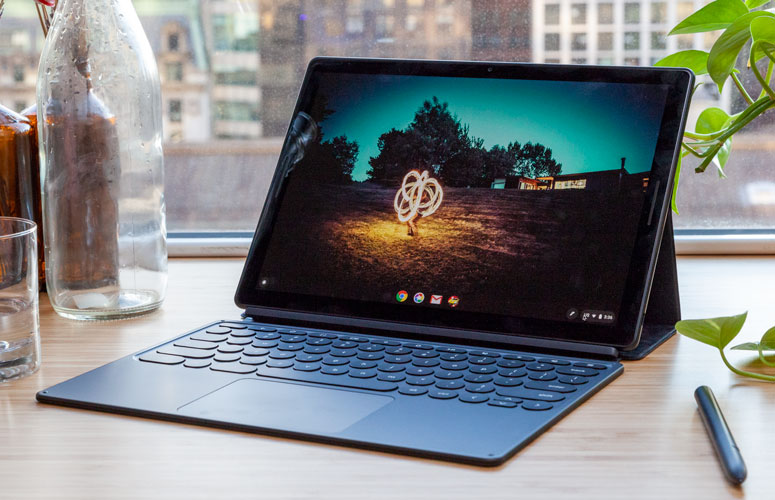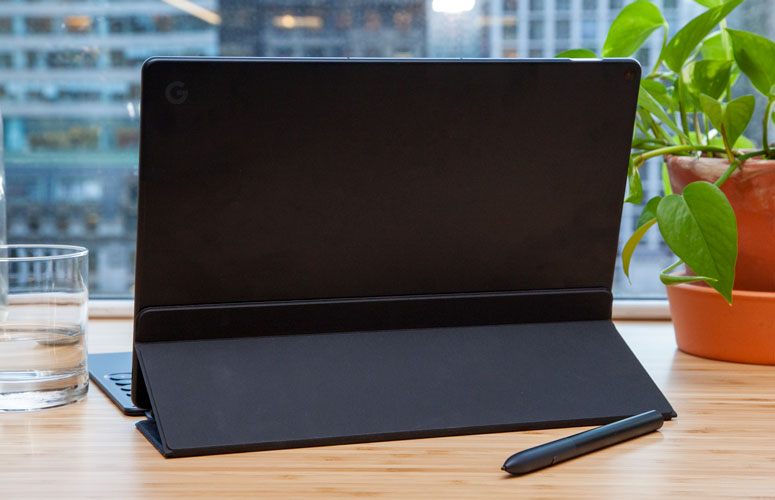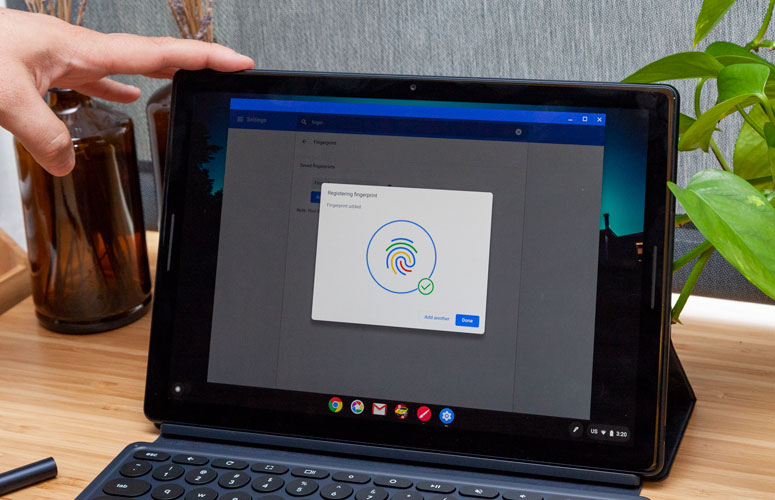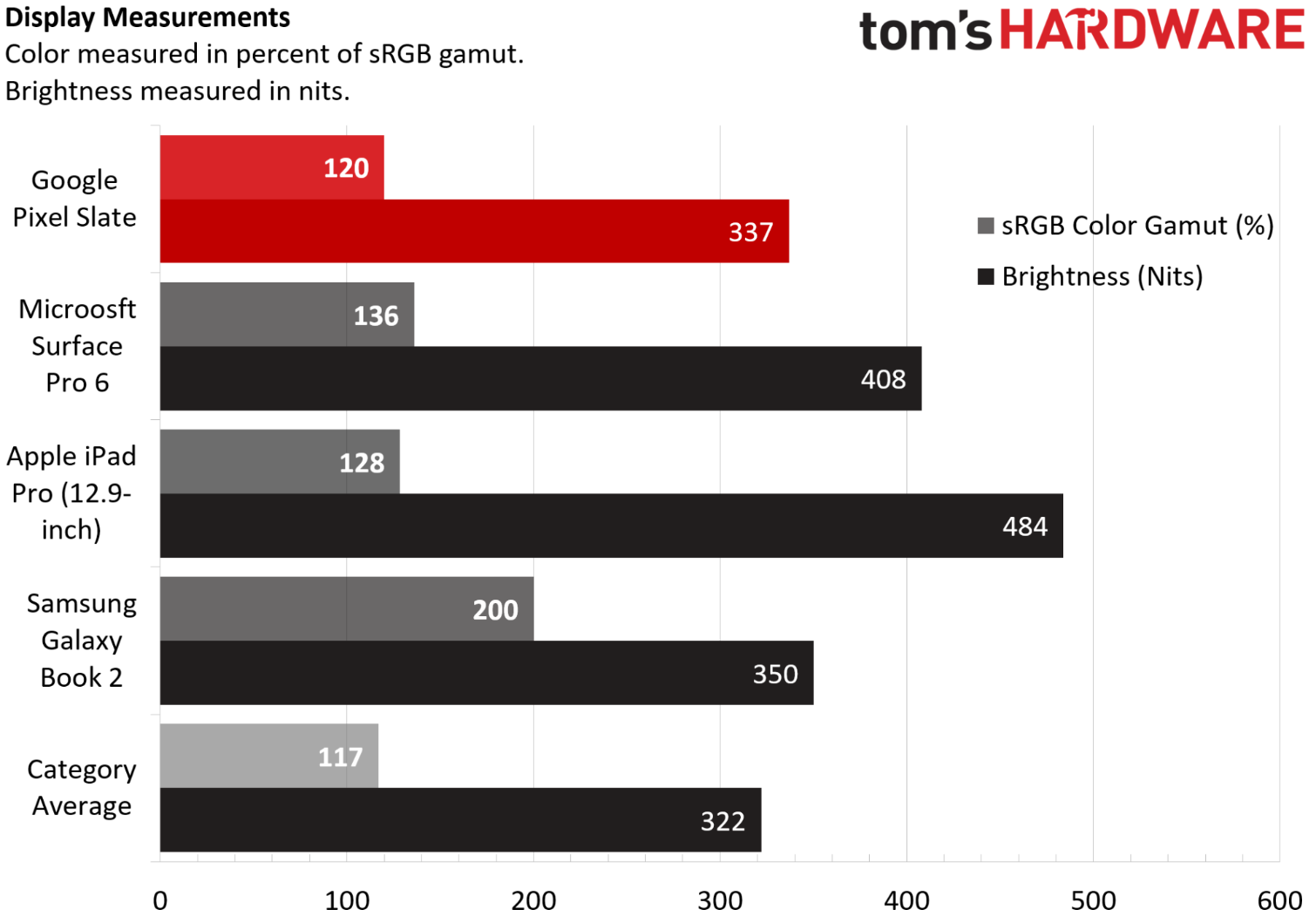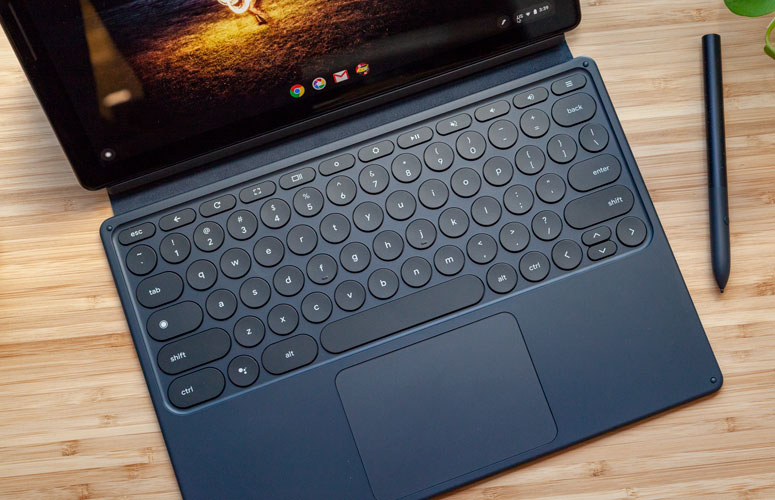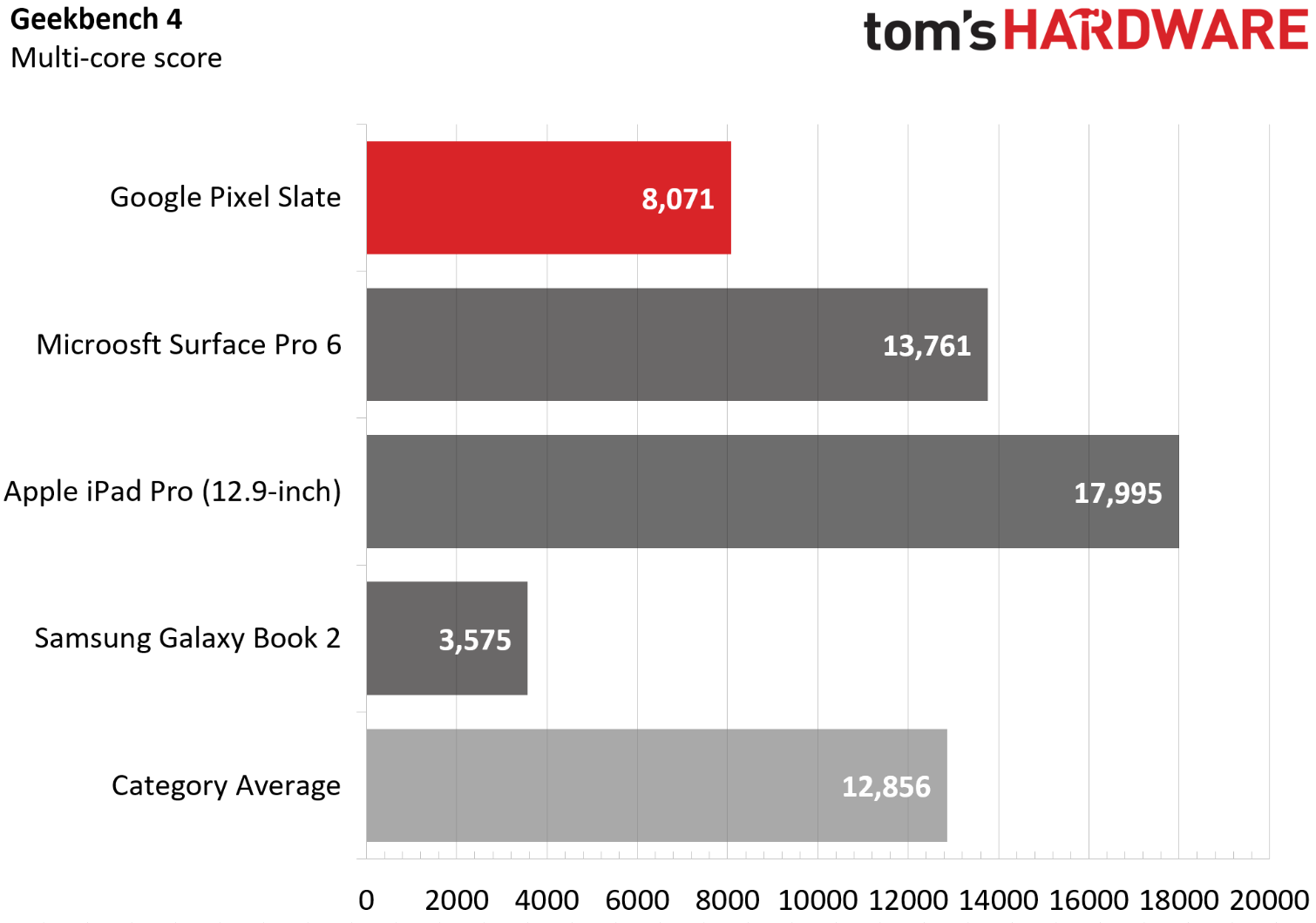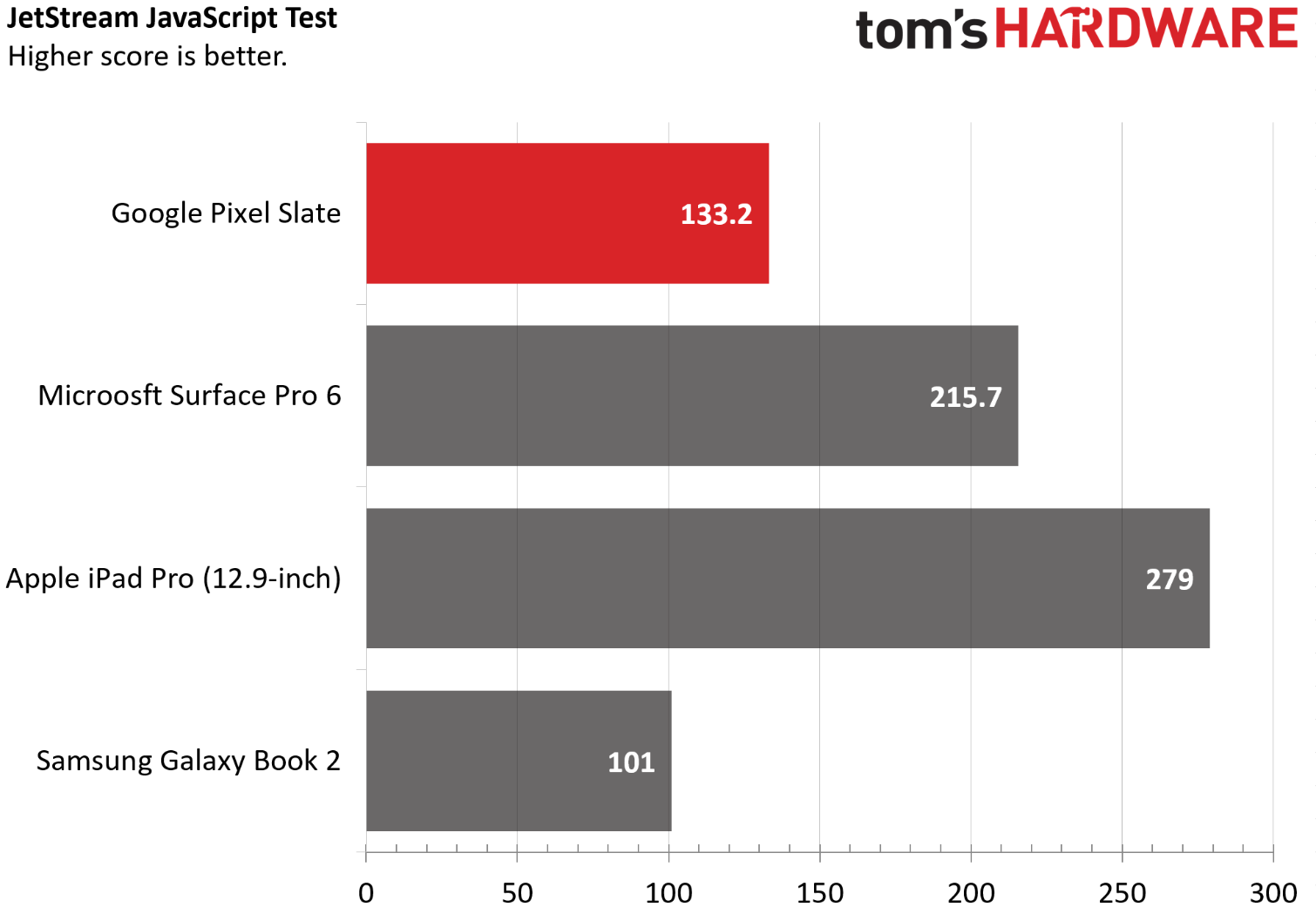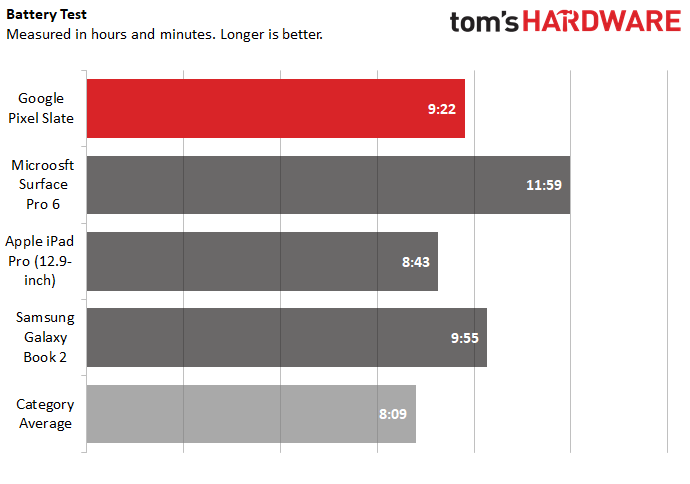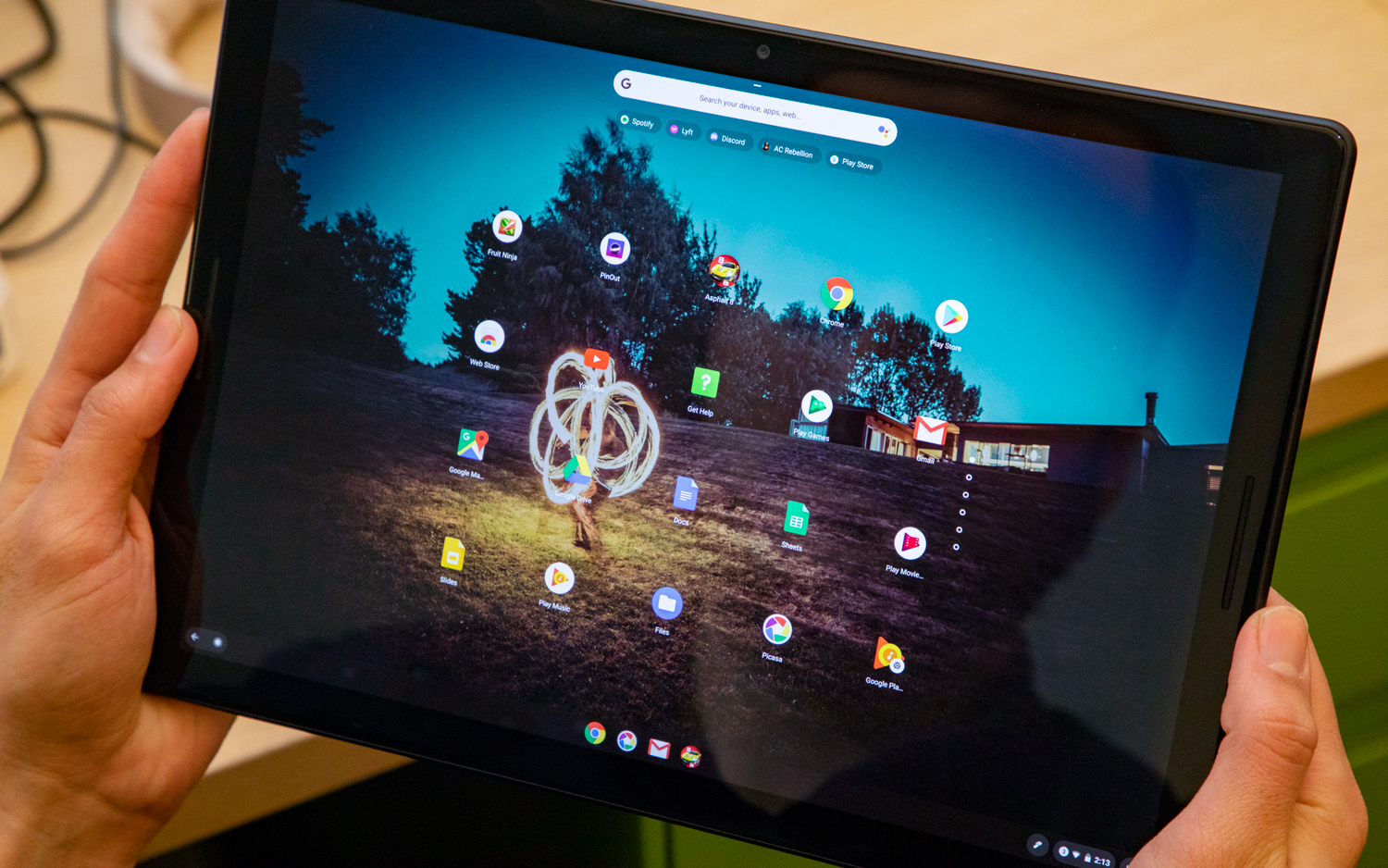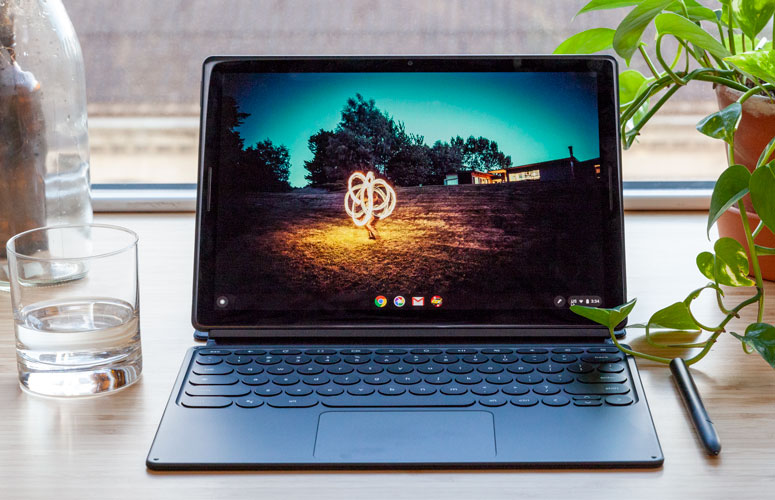Tom's Hardware Verdict
Those looking for a Google alternative to the iPad Pro will appreciate Google’s latest tablet. But when you factor in the keyboard, you can get a more powerful, more capable Windows device for less.
Pros
- +
Good display and excellent audio
- +
Ever-improving ecosystem
Cons
- -
Keyboard is expensive and heavy
- -
Android integration still isn’t perfect
- -
Expensive for its specs
Why you can trust Tom's Hardware
While the Chrome OS ecosystem is getting ever-more robust and functional with the passing of time, the company’s recent flagship devices, including 2017’s Pixelbook convertible and the Pixel Slate detachable we’re looking at here, have gone from affordable to extremely expensive. The Slate technically starts at $599 (with a Celeron CPU), but the Google-made keyboard adds $200 to the price. And our Core i5 model sells for $999 -- again, plus $200 for the keyboard.
Regardless of how good the hardware is (and it’s mostly good), a $1,000-plus Chrome convertible is a long, long way from the Chromebook’s affordable beginnings. And while you certainly can do more with Chrome OS today than you could even two years ago, the operating system still feels like a work in progress, and plenty of Android apps still don’t look great on this good-looking hardware.
You can get a more versatile, more powerful Windows convertible (like the Surface Pro 6) for less money (and with much more internal storage). So who exactly is the Pixel Slate a good fit for? Professionals who are far-more familiar with Chrome / Android and working on the Web than using Windows or iOS would be a good fit. That may not be a big-enough market for the Pixel Slate to be a huge hit, but Google’s hardware mostly excels at showing off what its platform is capable of and how far it’s come in the last eight years.
Specifications
| Display | 12.3-inch touchscreen LCD (3,000x2,000) |
| CPU | Intel Core i5-8200Y |
| Graphics | Intel UHD Graphics 615 |
| Memory | 8GB, LPDDR3 |
| SSD | 128GB |
| Networking | 802.11ac, 2x2 MIMO |
| Ports | Two USB-C |
| Audio | Two front-firing speakers, two noise-cancelling mics |
| Camera | Front: 8MP, Rear: 8MP |
| Battery | 48 WHr |
| Power Adapter | 45W USB-C |
| Operating System | Chrome OS |
| Dimensions (WxDxH) | 0.3 x 11.5 x 8 inches (7 x 291 x 202mm) without keyboard |
| Weight | 1.6 pounds (0.8 kilograms) without keyboard, 2.7 pounds (1.2 kilograms) with keyboard |
| Price (as configured) | $1,198 (as configured, with keyboard) |
Configurations
Stepping up to 8GB of RAM and 64GB of storage over the $599 4GB/32GB baseline adds another $100, and those configurations include a fairly low-powered Intel Celeron processor.
Google sent us the $999 configuration of the Pixel Slate for review, which includes a low-power Y-Series Intel CPU, 8GB of RAM, and a 128GB SSD. And as we’ve already noted, if you want the keyboard (and who wouldn’t, honestly?) that will push the price of this device up to $1,198. The top-end Core i7 config with 256GB of storage is astronomical at $1,599--plus $200 for the keyboard, plus another $100 if you want to add the Pixelbook pen.
Design
Just like with the company’s previous Pixelbook (a Yoga-like fold-over convertible), the Pixel Slate gets a lot of things right on the hardware front--at least with the tablet itself. The rounded edges and matte metal back make the 1.6-pound tablet a pleasure to hold, though it starts to feel heavy after prolonged use. The aluminum back easily picks up finger smudges. And while the bezels around the screen aren’t super slim by modern standards, they make it easier to pick up and handle the substantial 12.3-inch slate when using it as a standalone tablet.
While I like the tablet itself, my feelings about the keyboard are mixed. I’ll get to the typing experience shortly, but the $199 asking price feels like price gouging. Microsoft’s Surface Pro Type Covers sell for between $129 and $159 (depending on the model). And I’ve been saying for years they should be included in the box with the Surface; I feel the same way about the Slate.
Get Tom's Hardware's best news and in-depth reviews, straight to your inbox.
Making the keyboard an expensive accessory helps Google by way of making the starting price seem reasonably low at $599. But it’s fair to assume the amount of people willing to pay $599 for a tablet with 4GB of RAM and a Celeron CPU without a keyboard is pretty small. This device is clearly aiming to be a laptop replacement, much like Apple’s iPad Pro or Microsoft’s Surface Pro 6.
The keyboard’s magnetic cover folds over the back of the tablet nicely and lets you adjust the screen to several angles, but doesn’t lift the keyboard itself off of your work surface for a more comfortable typing experience.
My least-favorite aspect of the keyboard is that, when it’s paired with the Pixel slate and closed, the keyboard and screen slide around against each other when you’re carrying the device. This isn’t uncommon with folio-type designs, but it’s still disconcerting and is one of the only aspects of the design that makes the Slate feel cheap (which it definitely isn’t).


The tablet has two USB-C ports, one on each side in landscape orientation, near the bottom A volume rocker lives on the left side and a recessed button for power sits in the top-left corner. The power button also has a fingerprint reader embedded in it -- a first for a Chrome OS device -- which was both accurate and fast in my testing.
Audio
Note that there’s no headphone jack here. For audio, you’ll have to rely on the tablet’s quite-good (very loud, though not a lot of low-end) front-firing speakers or a Bluetooth device, or deal with the dongle that the company thoughtfully includes in the box.
While some users (including Laptop Mag’s Henry T. Casey) have had problems with Bluetooth reliability and connectivity, I didn’t have any issues using the Pixel Slate with my Anker Soundcore Spirit Pro earbuds or Sony XB950N1 headphones. Perhaps Google has fixed the issue with software updates.
Display
The Slate’s 12.3-inch, 3,000 x 2,000-resolution display looks quite good. I had no serious complaints about it while watching video, browsing the web, or running apps. But as you can see in the charts below, it doesn’t exactly stand out among competing flagship devices when it comes to max brightness or color gamut, sticking close to the category average.
Also, while I’m not a stickler for high refresh rates for productivity purposes, there’s no silky smooth 120Hz display here like there has been on the iPad Pro since 2017. Bottom line: The the Pixel Slate’s display is good for most intended tasks and the 3:2 aspect ratio is much better than 16:9 for doing actual work. But unless you’re coming from a low-resolution budget device, the screen offers little in the way of wow factor.
Keyboard and Touchpad
The keyboard is, good, not great. The round keys are visually striking at first and key travel is expectedly shallow with an abrupt bottoming out thanks to the fact that the keyboard lays flat on your work surface. But the keys are nicely separated from each other, and large enough that I didn’t often find myself making extra typos.
We did, though, run into what seems to be a software bug with the keyboard: Hitting Alt and the Search key is supposed to engage Caps Lock. But this only worked for me if the keyboard hadn’t been detached and replaced since the last reboot. This is an issue that others have had going back at least as far as early December. Hopefully it will get fixed in an update soon.
I certainly prefer my mechanical desktop keyboard, but if I had to use the Pixel Slate’s keyboard as my daily clacker, I could get by without a major hit to my productivity. There would definitely be an adjustment period, though.
The touchpad is both roomy and smooth enough to please. But more often than not, I found myself reaching out to the touch screen to tap and swipe. This is in part a testament to Google’s recent updates making Chrome OS more touch-friendly.
Performance
With its low-voltage Core i5-8200Y CPU, 8GB of RAM, and 128GB of solid-state storage, our $999 review configuration of the Pixel Slate is reasonably powerful so long as you aren’t planning on tackling demanding tasks like video editing -- and honestly, who is on a Chrome OS device? That said, those looking to do serious productivity, switching between a fair amount of tabs and, say, Office apps, will want to steer clear of the $599 entry configuration and its 4GB of RAM.
On Geekbench 4, the Pixel Slate’s score of 8,071 easily beat the 3,575 score put up by Samsung’s Galaxy Book 2 (and its Snapdragon 850 CPU) in the same test. But every other competing device did much better, with the iPad Pro more than doubling the Google device’s showing, with a score of 17,995. The Slate’s score here is also nearly 40 percent below the premium laptop category average.
Switching over to the JetStream JavaScript test, we saw a similar dynamic, with the Pixel Slate’s 133.2 score beating the 101 score of the Galaxy Book 2. But the iPad Pro’s 279 was again more than double what Google’s device delivered.
In terms of longevity, the Pixel Slate mostly impresses, with its time on our battery test of 9 hours and 22 minutes beating the category average of 8:09 by over an hour. It also bested the iPad Pro (8:43) by almost 40 minutes. But the Surface Pro 6 was easily the winner here, with its time of 11:59.
Heat
As we’d expect given the low-power processor and fanless design, heat wasn’t an issue with the Pixel Slate. After streaming a 15-minute video from Youtube, the hottest point of the display was 31.7 degrees Celsius (89.1 degrees Fahrenheit) while the back of the tablet measured 30.6 degrees Celsius (87.1 degrees Fahrenheit).


Chrome OS and Android: Still a Work in Progress
As for the operating system -- or operating systems when you include Android apps -- Google has made many improvements since I first tested the integration of the two on the Pixelbook. The vast majority of Android apps seem to work on the Pixel Slate, but those designed for phones often don’t look good on the Slate’s big, high-resolution display.
Also, switching between apps and trying to get apps and Chrome tabs on screen at the same time, often feels clunky and problematic, especially compared to Windows and MacOS which are very mature operating that do multitasking very well.
And despite fairly the fairly robust hardware in our $999 review configuration, when downloading apps or video in the background while trying to play games or get work done, the Pixel Slate’s performance was more than occasionally choppy. In short, while it’s come a very long way, Chrome OS and its Android integration still very much feel like a work in progress. While that feels somewhat acceptable on a $250 Chromebook, it’s tougher to swallow on a convertible tablet that costs $1,200 with a keyboard.
Bottom Line
If you like the idea of using Google hardware and software and are willing to put up with occasional hiccups and clunkiness on your premium device, that’s fine. But for those who prefer a smoother experience on a svelte, attractive convertible the iPad Pro and a keyboard might be a better fit. And for those who need to do serious video editing or other tasks that run better on more powerful hardware, the Surface Pro 6 is a better choice.
As it stands, the Pixel Slate feels like a niche device. Although frankly, from a hardware perspective, the Pixelbook convertible feels more polished and premium than the Pixel Slate.
We’re glad that Google is working on new form factors and pushing its platform forward. But we wish the company would focus a bit more on final polish, while also bringing costs down for its flagship products. Until then, there are still plenty of perfectly good and affordable Chromebooks for the rest of us.
MORE: Best Gaming Laptops
MORE: Gaming Laptop Reviews
MORE: All Laptop Content
Photo Credit: Tom's Hardware
After a rough start with the Mattel Aquarius as a child, Matt built his first PC in the late 1990s and ventured into mild PC modding in the early 2000s. He’s spent the last 15 years covering emerging technology for Smithsonian, Popular Science, and Consumer Reports, while testing components and PCs for Computer Shopper, PCMag and Digital Trends.
-
g-unit1111 Reply21722211 said:The keyboard looks like it was made by Logitech.
And one of their cheaper models at that. :lol:
I don't know why anyone would buy this thing when you can get a much better equipped Surface for the same price and you get full Windows.

